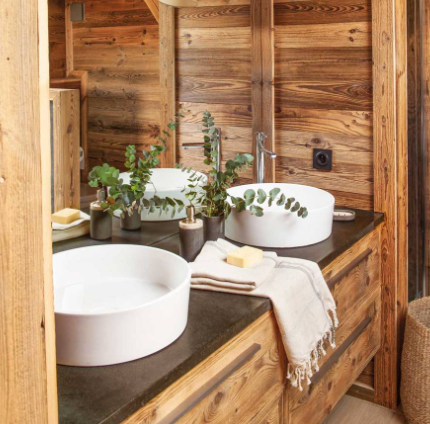 Since this is the sad truth of the planet, how do you protect the wood from humidity? How do you keep this beautiful wooden floor finish without incurring the wrath of the oceans, and then the big question remains, how do you waterproof wood for a bathroom to prevent the harm in your bathroom caused by moisture? Well, bathroom remodeling Charleston, SC has the answers.
Since this is the sad truth of the planet, how do you protect the wood from humidity? How do you keep this beautiful wooden floor finish without incurring the wrath of the oceans, and then the big question remains, how do you waterproof wood for a bathroom to prevent the harm in your bathroom caused by moisture? Well, bathroom remodeling Charleston, SC has the answers.In a bathroom world where water governs, there are three fail-proof methods you can use to waterproof your timber.
But first you need to know this: there's a thin line between woods that are waterproof and waterproof.
So if you are told next that a certain piece of wood is water-resistant, it means that it will withstand water to a certain extent, but eventually it will bend to the water's durable forces at the end. A waterproofed wood, on the other hand, implies that the wood is safe from the powers of water forever.
Wood with Oil Waterproofing
To waterproof your wood, there are three oil options you can use. Linseed oil, walnut oil, and tungsten oil are all there. The following procedures will help you waterproof your wooden bathroom decor and preserve the waters at their bay, whatever oil you plan to use.
To obtain a more effective waterproofing oil, mix the oil with either turpentine or apple cider vinegar. Make certain that you stir thoroughly. As you can still use the oil separately, this is not a must.
To smooth rough surfaces and edges, prepare the wood surface by using sandpaper. When you are done with the oiling, rough surfaces can become clearly apparent and appear distasteful, which is why this phase is crucial.
Dip a soft-bristle brush into the oil and spread it thoroughly across the wood, leaving no surfaces and edges untouched.
Give a little time for the surface and edges of the wood to absorb the oil, allowing you to find untouched areas and then reapply to those areas to do the necessary things.
Let the wood absorb the oil again and then, with a clean dry rag, clean off the oil residues.
Give time for the wood to dry. Mixtures of oils dry more easily than single oils. If you're using a single oil, the drying period could take a few hours or even half a day.
After you have allowed the wood to dry, if you have more to ensure it is heavily finished and waterproofed, you can then reapply the oil to the dried wood surface again.
Using Wood Waterproofing Sealants
This approach includes the use of sealants to waterproof woods. The application processes are almost similar to those of oils.
The only difference here is that the sealers do not actually have to be combined with any other natural or synthetic chemicals. But you have to dry the wood, sandpaper it, and that does it for the pre-application preparations. By either spraying or using a brush, you can then apply the sealer afterwards. After the spraying or application with a brush is done, let it dry. Then add your wood two more times to ensure that it is well covered against water.
Stain and Sealer Waterproofing Wood with
This happens to be the most powerful and elegant bathroom waterproofing process for wood. About why? Since you can opt to use stains on your own or make a strong combo of stain-sealants. Such stains are transparent when applied. With more grease, lighter stains arrive. For interior forests, such as your bathroom, they are best used, which is the core of everything detailed here.
The method of implementation is nothing different from the other two. To smooth the surface and limit imperfections on the job, wipe the wood dry, sand and then apply with a brush. Enable to dry, remove stains with a clean dry rag and reapply for a thorough finish, up to two or three times afterwards. This refers to combinations of stains and stain-sealants.





